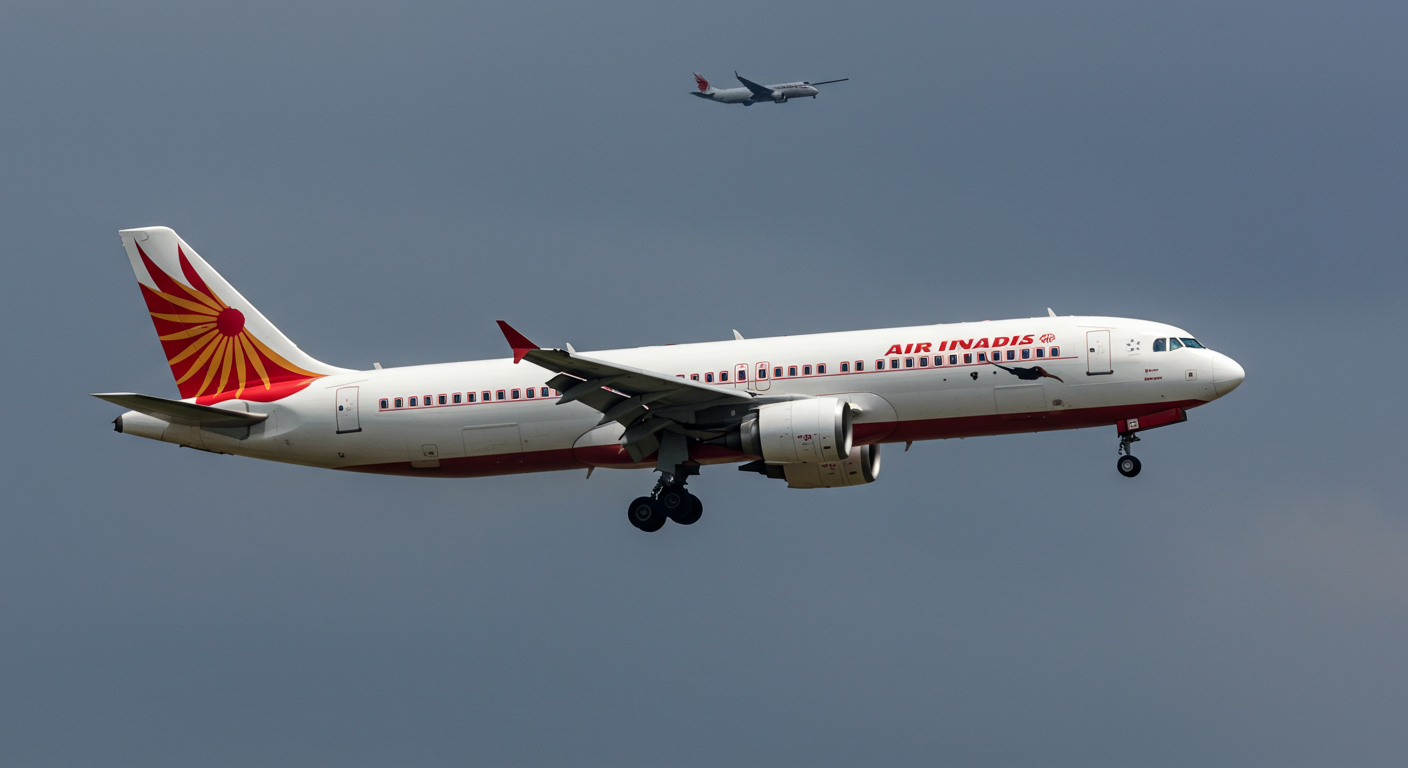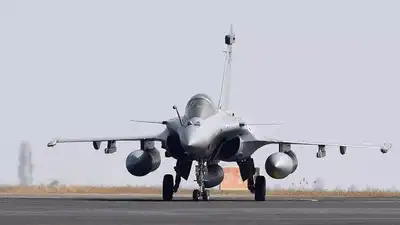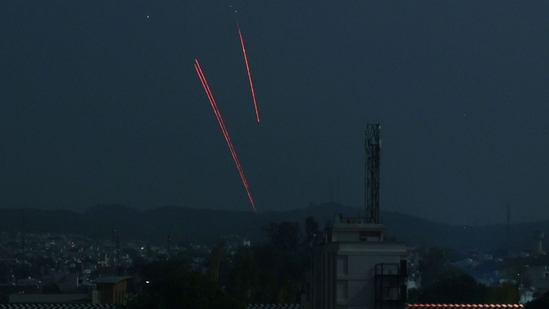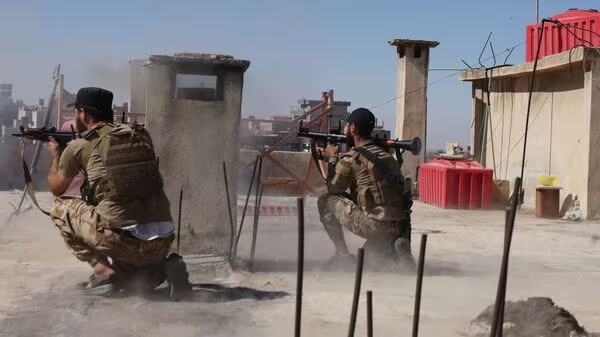Imagine the moment of relief as your plane touches down after a long journey. The seatbelt signs are off, and you’re just moments away from stepping out into the fresh air. For the passengers aboard Air India flight AI310, arriving in Delhi from Hong Kong on a Monday afternoon, this routine moment took an unexpected turn. While the aircraft safely completed its landing, a small but significant incident unfolded on the tarmac, reminding us of the incredible complexities and robust safety systems that underpin modern air travel.
This blog post dives into what happened, why these incidents occur, and most importantly, how the aviation industry ensures passenger safety even when the unexpected occurs. It’s a testament to quick thinking, advanced technology, and rigorous training that what could have been a serious event was handled with precision and professionalism, ensuring everyone’s well-being.
The Unfolding of an Unexpected Event
On Monday, May 13, 2024, Air India flight AI310, a Boeing 787-8 Dreamliner (registration VT-NAA), concluded its journey from Hong Kong to Delhi’s Indira Gandhi International (IGI) Airport. The flight had been uneventful, and the plane landed safely, as hundreds of flights do every day around the world. However, shortly after coming to a halt on the taxiway, a crucial part of the aircraft, the Auxiliary Power Unit (APU), located in the tail section, reportedly caught fire. This immediately triggered alarm bells among the ground crew and the diligent cockpit crew.
The incident occurred around 1:30 PM, a busy time at one of the world’s busiest airports. Eyewitnesses reported seeing smoke and flames emanating from the rear of the aircraft. This sight, while alarming, was met with an immediate and well-coordinated response. The airport’s fire tenders, always on high alert and strategically positioned, were dispatched without a moment’s delay. Their swift action was critical; the fire was quickly doused, preventing it from escalating into a larger, more dangerous situation. The preliminary assessment pointed towards a fuel leak as the likely cause of the APU catching fire, an issue that requires thorough investigation.
Crucially, all passengers and crew on board were safe. They were deplaned normally, albeit with a slight delay due to the ongoing situation, and transported to the terminal. The quick containment of the fire and the safe evacuation underscore the effectiveness of the extensive training pilots, cabin crew, and ground staff undergo to handle emergencies. It’s a system designed to protect lives, and in this instance, it worked exactly as it should.
Understanding the Auxiliary Power Unit (APU)
To fully grasp the nature of this incident, it’s helpful to understand what an APU is and why it’s so vital to an aircraft’s operations. The Auxiliary Power Unit is essentially a small jet engine, typically located in the tail cone of the aircraft. Think of it as the plane’s mini-power station when its main engines aren’t running.
Its primary functions include:
- Providing electrical power to the aircraft systems while it’s on the ground, before the main engines are started. This powers everything from cabin lights and entertainment systems to galley equipment.
- Supplying pneumatic (air) pressure for starting the main engines. Without the APU, starting those massive engines would be a much more complex process.
- Providing air conditioning and heating for the cabin when the aircraft is parked, ensuring passenger comfort even before boarding or after deplaning.
While essential, it’s important to remember that the APU is not involved in propelling the aircraft during flight. It’s a separate system, designed for ground operations and initial engine start-up. So, an issue with the APU, while certainly a cause for concern and immediate action, does not compromise the aircraft’s ability to fly or land safely if the incident occurs on the ground, as it did in this case.
The Swift and Professional Response
What stands out in this incident is the efficiency of the emergency response. As soon as the APU issue was detected, the crew followed standard procedures, alerting air traffic control and airport emergency services. The speed with which airport fire tenders reached the aircraft and brought the fire under control is commendable. This rapid deployment prevented any significant damage to the aircraft and ensured the safety of everyone on board and on the ground.
This incident highlights the importance of regular emergency drills and the seamless coordination between various airport departments. From the pilots in the cockpit to the ground crew and the fire brigade, every link in the safety chain played their part effectively. It’s a powerful reminder that while we often focus on the glamour of air travel, there’s an immense amount of planning, training, and infrastructure dedicated to ensuring safety, even in unforeseen circumstances.
Why Do Such Incidents Occur, and What Happens Next?
Aircraft are marvels of engineering, comprising millions of components. Like any complex machine, they can occasionally develop technical snags. A fuel leak, as suspected in this case, can be due to various reasons – a worn seal, a cracked pipe, or even a minor manufacturing defect in a specific component. These are often discovered during routine maintenance or, in rarer cases, manifest during operation. The aviation industry operates on the principle of redundancy and fail-safes, meaning that even if one system encounters an issue, there are others to back it up or contain the problem.
Following any such incident, a thorough investigation is launched. In India, this falls under the purview of the Directorate General of Civil Aviation (DGCA). Their role is to meticulously examine the aircraft, review maintenance records, interview the crew, and analyze all available data to pinpoint the exact cause. The aim is not just to understand what happened, but more importantly, to learn from it and implement measures to prevent similar occurrences in the future. This continuous cycle of investigation, learning, and improvement is a cornerstone of aviation safety, constantly pushing the industry towards higher standards.
The Bigger Picture: Air Travel Remains Incredibly Safe
While an incident like an APU fire can sound alarming, it’s crucial to put it into perspective. Air travel remains one of the safest modes of transportation globally. Millions of flights take off and land safely every day, carrying billions of passengers annually. The very fact that an isolated incident like this makes headlines underscores its rarity and the robust systems in place to manage it.
Every aircraft undergoes stringent checks before, during, and after flights. Airlines adhere to strict maintenance schedules, guided by manufacturers’ guidelines and regulatory bodies. Pilots and crew are extensively trained to handle a wide array of emergency scenarios. This multi-layered approach to safety, from design and manufacturing to maintenance and operations, ensures that even when a technical snag arises, there are protocols and experienced personnel ready to respond effectively.
This Air India incident serves as a powerful testament to that system’s efficacy. An issue arose, it was detected, responded to, and resolved without harm to anyone. It’s a clear demonstration that the “behind-the-scenes” world of aviation safety is not just theoretical; it’s a living, breathing, and highly effective framework that prioritizes passenger well-being above all else.
Looking Ahead
As the DGCA continues its investigation into the Air India APU incident, the findings will contribute to the ongoing refinement of aviation safety practices. Every incident, no matter how minor, provides valuable data and insights that help make flying even safer. For passengers, this event should reinforce confidence in the rigorous safety culture of the aviation industry.
Next time you buckle up for a flight, remember that behind the seemingly effortless journey lies a vast network of dedicated professionals and sophisticated systems, all working in harmony to ensure you reach your destination safely. And when the unexpected does happen, as it occasionally will with any complex machinery, you can rest assured that the industry is well-prepared to handle it.









